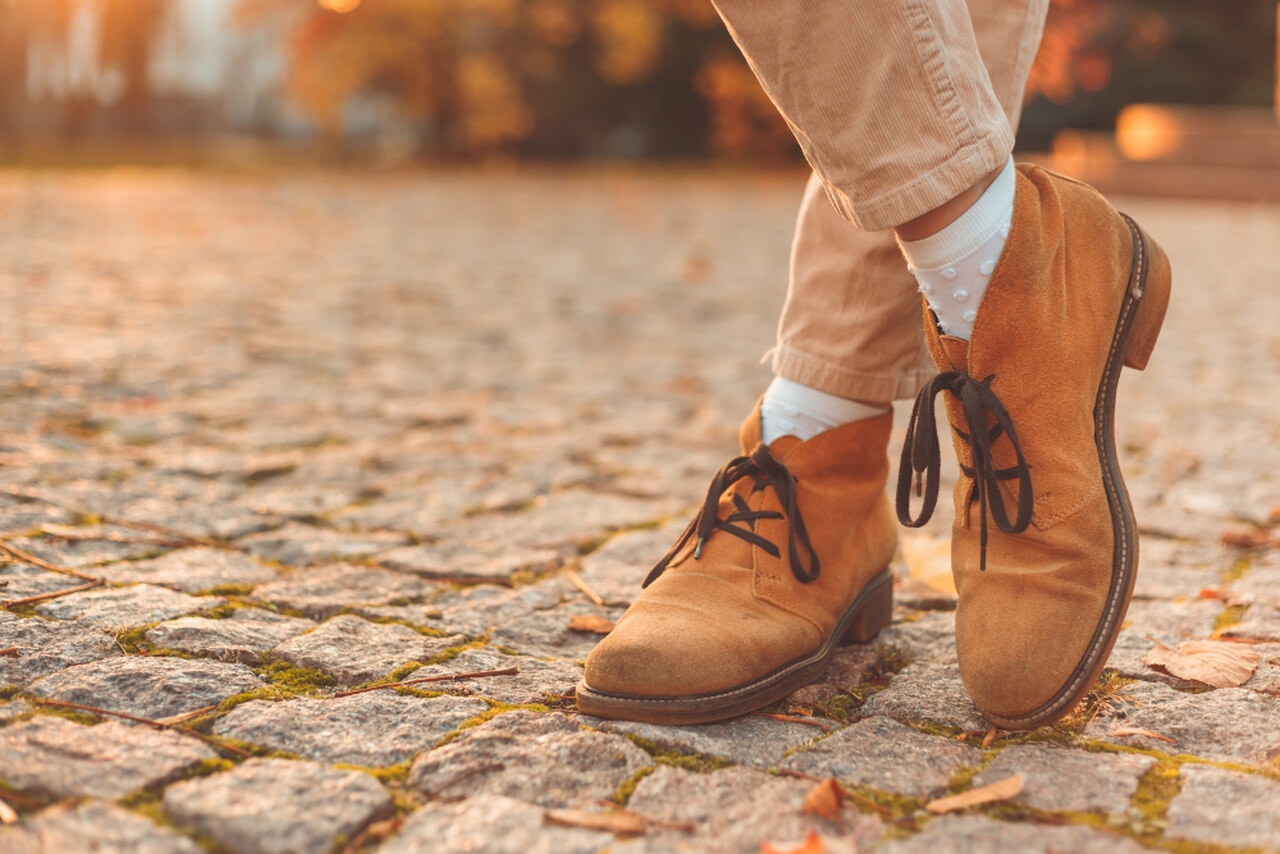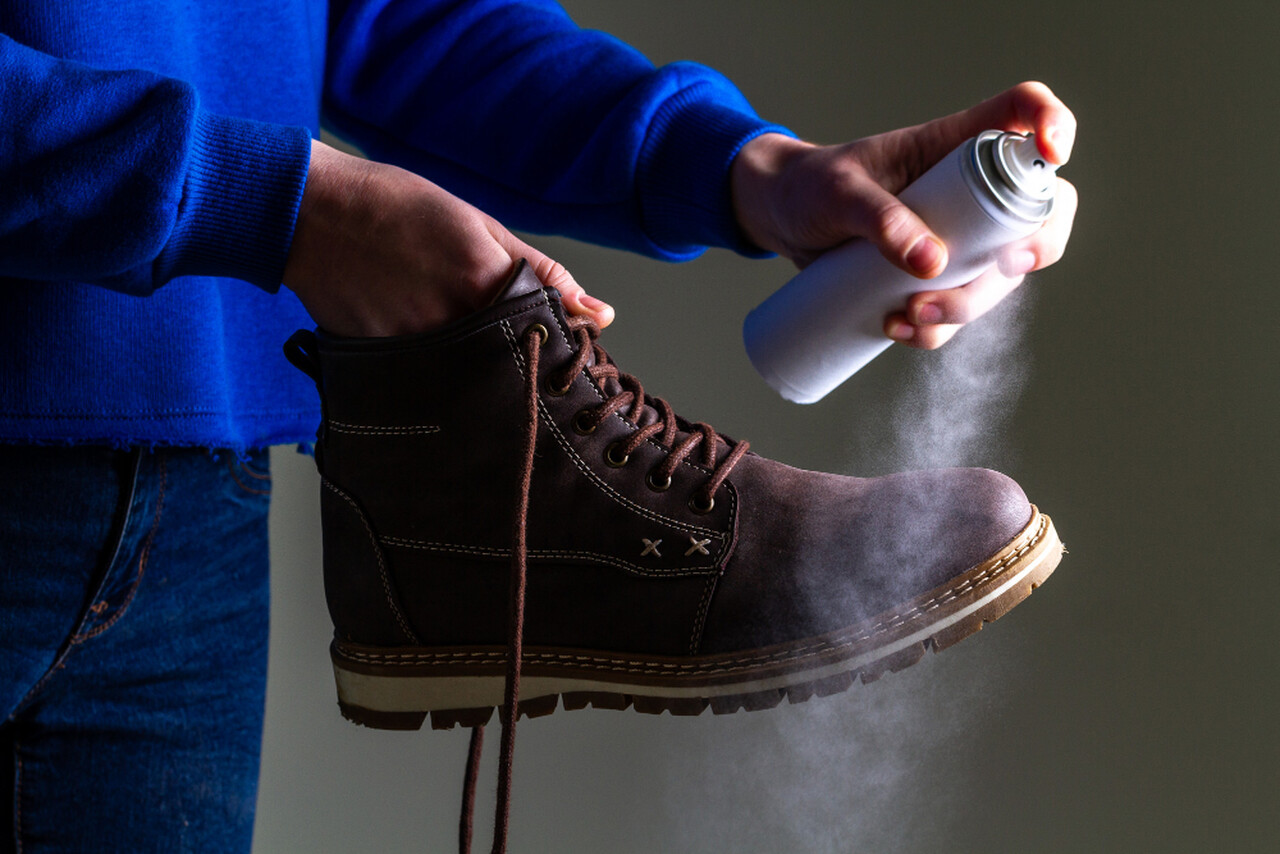Nubuck - everything you need to know about this leather and its care
Different types of leather are used for footwear - grain leather, suede leather and nubuck leather. The various solutions differ in their properties. Each has its own advantages and disadvantages, which should be taken into account when you choose shoes for a specific season. Nubuck - what it is and what its care looks like? The answers to these and other questions can be found in our article, in which we take a closer look at this luxury material. After reading the text, you will consciously decide whether nubuck leather is right for you.
Table of Contents:
- Nubuck leather - what it is and how it is made?
- Nubuck leather - characteristics and applications
- Nubuck leather or suede leather? Differences and similarities
- Care and maintenance of nubuck leather
- Advantages and disadvantages of nubuck leather - what you should know before you buy it?

Nubuck leather - what it is and how it is made?
The footwear industry uses two types of leather - grain leather and rough leather. What are the characteristics of each and how does this translate into the performance qualities of the shoes? Faced leather is distinguished by the fact that it remains smooth and hairless. Sometimes it is given a luxurious shine by coating it with wax. When it is injected using high temperature, it creates an extremely durable and resistant saffiano leather. It is used in the production of exclusive accessories. Grain leather shoes are very popular because they are considered easy to care for and resistant to moisture. They can be worn on rainy days and during snowfall.
Rough skin is characterized by the fact that you can see hairs on it that protrude above the surface of the skin. If we start touching it, darker welts will form on it. This is due to the fact that we arrange the hair at a different angle. Rough leathers include suede, nubuck and velour. The aforementioned materials are used in the production of bags and shoes, but it should be remembered that their care is a bit more complicated. Besides, rough skin should have as little contact with moisture as possible. It is recommended to protect it with a waterproof impregnator.
What is nubuck? Under this term is a specially polished grain leather (outer). The aforementioned process contributes to changing its texture. The material gains a mesquite texture that is deceptively similar to suede, but has shorter and more matte hairs than it. Nubuck leather is obtained from bovine, calf and pig skin. Sometimes it is intentionally sanded in a non-uniform way to obtain a gradient (different shades of the same color).
Nubuck leather, when sanded or polished, is quite a treat for various microorganisms, as it contains animal protein. It should therefore be protected against the proliferation of bacteria and fungi through the tanning process. It is carried out using chromium salts, which at the same time increase the mechanical resistance of nubuck.
Nubuck leather - characteristics and applications
Nubuck leather is characterized by the fact that it has been subjected to a gentle polishing of the top layer, during this process the natural grains have been removed from it. It is considered extremely soft and pleasant to the touch. If we take proper care of it, it will serve us for years, maintaining its qualities of use and impeccable appearance. Nubuck is distinguished by being slightly thicker, stiffer and more durable than suede. It is most often used to produce ladies' boots i winter boots. In addition, on the footwear market you can find women's half shoes, stilettos, pumps and sneakers made of nubuck, which impress with their high quality and original finish.
Nubuck leather also serves manufacturers of handbags, belts, wallets, skirts, pants and coats. It can be used to make exclusive accessories and clothes that catch the eye with their unusual texture.
Nubuck leather or suede leather? Differences and similarities
Nubuck leather and suede look similar in that they have a mesquite texture. However, if we take a closer look at both materials, we can see significant differences between them. Suede is distinguished by longer hair. In addition, it has a shinier finish. Nubuck leather, on the other hand, is considered to be more pleasant and soft to the touch. It also shows greater resistance to mechanical damage. Both nubuck and suede are badly affected by contact with water. The aforementioned materials can be protected with a special impregnator, so that they will not be damaged and discolored by getting wet. Clean them with a soft brush so as not to disturb the mesquite structure.
Sometimes it happens that nubuck leather resembles grain leather more than suede. This happens when the manufacturer decided to give it some shine with the help of wax.

Care and maintenance of nubuck leather
Nubuck leather is considered exclusive and luxurious. It looks intriguing because of its unusual mesquite texture and short hairs. If we want it to serve us for years, we must take proper care of it. What nubuck care looks like? Below you will find the most important issues related to its maintenance.
1. Cleaning nubuck with a brush
When we wear shoes, dirt, dust and soil settle on them. It is necessary to remove the dirt from them regularly, preferably to be done after each return home. Nubuck leather has a specific texture, so for this we use a special brush with soft bristles.
2. Impregnation of nubuck
Nubuck, like suede, should not come into contact with water. It is discouraged to wear it on rainy and snowy days. Fortunately, it can be protected with a special waterproofing agent.
3. Drying nubuck leather
It happens that we come home with wet nubuck shoes. In such a situation, put them in the hallway away from heat sources and wait for them to dry naturally.
4. Removing stains from nubuck leather
Nubuck leather is susceptible to dry and wet stains. Remove the first with a special eraser for suede. To the other we put an absorbent cloth to soak up the moisture. On the other hand, oily stains, such as from oil, cream, etc., eliminate by sprinkling talcum powder on shoes. Set them aside overnight, and in the morning get rid of the powder using a brush with soft bristles
5. Maintenance of nubuck
Nubuck is a natural leather that needs to be moisturized and nourished. Otherwise it may crack and suffer irreparable damage. Special nubuck conditioners in the form of a spray are used, with which shoes are sprayed and then brushed. Also very popular are those in liquid form topped with a sponge applicator.
Advantages and disadvantages of nubuck leather - what you should know before you buy it?
Nubuck has its advantages and disadvantages, which should be considered before making a purchase. Although it looks striking, it will not pass the test with everyone. This is because its care poses more difficulties than the maintenance of grain leather.
Advantages of nubuck:
- a mesquite texture that resembles suede,
- softness of the leather, which translates into high comfort of the shoes,
- higher resistance to mechanical damage than suede,
- natural support of proper thermoregulation, thus protecting against excessive foot perspiration.
Disadvantages of nubuck:
- complicated care, which is indispensable if you want to enjoy it for a long time,
- less resistant to mechanical damage than grain leather,
- sensitivity to water and discoloration under its influence,
- color fading during long-term use,
- higher price than shoes made of suede and grain leather.
